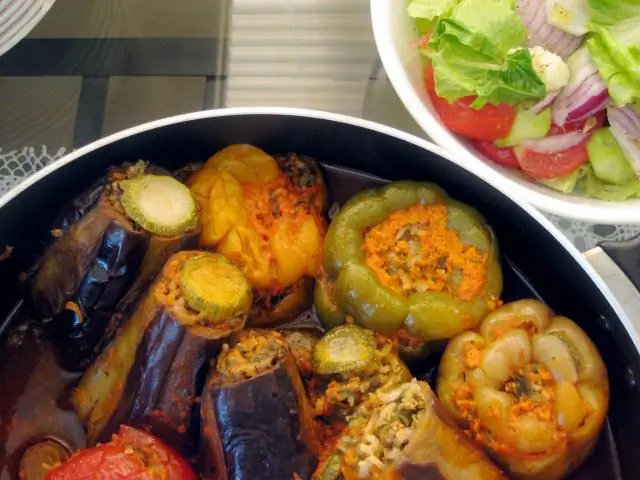
Table of contents:
- Author Bailey Albertson [email protected].
- Public 2023-12-17 12:53.
- Last modified 2025-06-01 07:32.
How to store beets correctly and not lose crops

Many factors influence the keeping quality of beets. They must be taken into account when storing products.
How to prepare root vegetables for storage
In order for the beets to be stored until the new harvest, varieties of late ripening that are zoned in the region of growth are chosen and grown in compliance with the rules of agricultural technology.
When harvesting, consider the following:
-
Root crops are harvested before frost so that the part protruding from the ground does not freeze.

Beets in the garden The top of the beets is above the soil level: beets can suffer from frost and be unsuitable for storage
- Even in a drought, watering is stopped two weeks before harvesting.
- Harvested in dry weather.
-
The beets are not pulled out by the tops, but dig in and removed from the soil.

Harvesting beets When harvesting, the beets are not pulled by the tops, but undermined and carefully removed from the soil
-
The collected products are dried:
-
in dry weather, you can leave it in the garden for 2-4 hours;

Drying beets in the garden The dug beets are dried; in dry weather, this can be done in the garden
- when it rains, it is dried in a ventilated room for 4-7 days.
-
In preparation for storage, root crops are processed as follows:
- Clean them from clods of earth with hands or rags without using rough objects.
-
The tops are cut with a knife, leaving up to 1 cm in length.

Trimming beet tops The tops are cut with a knife, it cannot be torn off or "twisted" by hand
- The lateral roots are carefully removed.
-
The main root is shortened to 7-8 cm only if it is very long and branched.

Beetroot fruits with roots It is better to keep the main root intact - this will prevent the ingress of pathogenic microorganisms into the root crop
- Beets are never washed.
Processed products are sorted:
- Medium-sized root crops are selected, with a diameter of about 10-12 cm.
- Beets with signs of disease and damage are discarded.
Then the roots are dried again in a dry, cool, well-ventilated room for a week.
In what conditions are beets stored
The optimal storage conditions for beets are as follows:
- Dark room with natural air circulation.
- Temperature 0-2º C.
- Humidity is about 90%, it is determined using a hygrometer. With a decrease in the indicator, open containers with water are placed in the room, with an increase - with table salt.
Storage methods in the basement and cellar
For any storage option, root crops should not be less than 15 cm from the floor and 10 cm from the walls. The most common storage methods are:
-
In bins up to one meter high with a wooden grate at the bottom. The method is used with a large number of products and a lack of space. The bins filled to the top will fit from 8 to 10 layers of beets with a diameter of 10-12 cm. It can be shifted with wood shavings, leaves of mountain ash, wormwood or fern.

Storing beets in bins Large quantities of beets can be stored in the bins, saving space
- On wooden shelves (they can be covered with burlap or straw), the roots are laid in the form of separate pyramids tapering upward, the top of which should not touch the shelves on top. This option provides good ventilation.
-
One of the best ways is to store on potatoes: it shares excess moisture with the beets, which is good for both crops. Root vegetables are placed on top of the potatoes in one layer.

Storing beets with potatoes When stored together, potatoes share excess moisture with beets
-
In open wooden or plastic boxes with holes.

Beets in boxes Storage in ventilated boxes is one of the easiest ways
-
In boxes with calcined sand, completely immersing beets in it.

Beets in a box of sand When stacked in boxes with sand, the beets are first poured so that the roots do not touch, and then they are completely covered
-
Beets are also stored in boxes:
- sprinkled with ash, chalk, table salt, peat or sawdust;
- interlaced with wood shavings, rowan leaves, wormwood or fern;
- pre-soaked in a clay mash and dried.
- You can store root vegetables in open plastic bags with a capacity of no more than 35-40 kg, but this is not the best option.
How to preserve beets in an urban setting
Root vegetables can be stored until spring:
- On a frost-protected balcony - in boxes with sand, covering them with a blanket when the temperature drops below 0º C;
- On the balcony with a high risk of freezing - in a box insulated with foam from the inside, with heating in it in the form of a low-watt light bulb.
Beets sprinkled with sand, ash, chalk or sawdust can be stored in boxes for up to three to four months in the following places:
- change house on the staircase;
- pantry;
- room under a bed or closet, away from heat sources.
In the refrigerator, the root vegetables, each individually wrapped in food foil, will be stored for two to three months.
Good keeping quality is characteristic of beets. If the recommendations are followed, it can be stored in the basement for up to eight months.
Recommended:
How To Peel Eggplants (for Stews And Not Only) Correctly + Photos And Videos

Detailed description of the eggplant cleaning process. In what cases it is necessary to peel eggplants
How To Open A Coconut At Home, Cut And Peel It, How To Store This Fruit Correctly + Video

Simple ways to open a nut and extract the pulp. Instructions with photos and videos. Storing the pulp of the coconut and applying the shell. Why is coconut and its juice useful?
What To Do If, After Flashing Android, The Phone Or Tablet Does Not Turn On, Does Not See The Network, Does Not Charge

Why does my smartphone or tablet not work after changing the Android version. How to troubleshoot various problems. How to properly reflash a device
Is It Possible To Lose Weight If You Do Not Eat Bread And Sweets And By How Much - In A Week, In A Month, Reviews

Why do we get fat from sweets and bread and is it possible to lose weight without them. Is it necessary to completely abandon sweet and starchy foods. Weight loss results
Is It Possible To Lose Weight If You Do Not Sleep At Night

How much sleep does it take to feel good. Is it possible to lose weight if you stay awake more. Can it hurt
